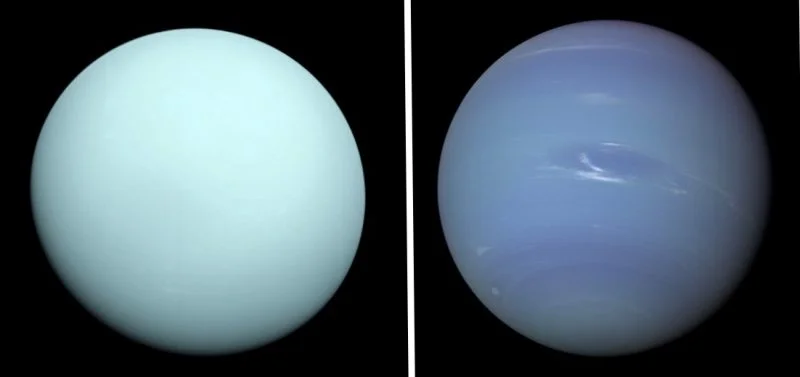New moons discovered on Uranus and Neptune
- February 25, 2024
- 0
Until February of this year, Uranus and Neptune officially had only 27 and 14 moons, respectively. This is much more than that of Earth, Mars or Pluto, but
Until February of this year, Uranus and Neptune officially had only 27 and 14 moons, respectively. This is much more than that of Earth, Mars or Pluto, but

Until February of this year, Uranus and Neptune officially had only 27 and 14 moons, respectively. This is much more than that of Earth, Mars or Pluto, but also several times less than that of Jupiter and Saturn (these two planets have several hundred moons). One of the reasons for such a quantitative difference with other giant planets is the insufficient study of the satellite systems of Uranus and Neptune. They are located 19 to 30 times farther from the Sun than the Earth and several times farther than the fifth and sixth planets. If terrestrial space probes operated in orbits around Saturn and Jupiter, this was not the case for the seventh and eighth planets of the Solar System. The spacecraft that passed quickly by them did not have the opportunity to examine the surroundings of these planets in detail.
Now astronomers from the Carnegie Institution (USA) report the discovery of two new moons, the 28th moon of Uranus and the 15th and 16th moon of Neptune. Astronomer Scott Sheppard (Scott S. Sheppard) notes that these are the faintest moons ever discovered in these bodies. It was possible to detect them only after a special computerized image processing procedure.
The moon of Uranus is currently tentatively named S/2023 U1. This name reflects the date of the first image with which it was finally identified (taken in November 2023, but took time to process and verify). It is only eight kilometers in diameter, making it probably the smallest of this planet’s moons. This object makes a complete orbit around its host planet in 680 Earth days. The permanent name of the new satellite will be determined later. According to the rules of this planet, the names of Shakespeare’s characters will be taken from them.
The two newly discovered moons of Neptune are S/2002 N5 and S/2021. Although the names indicate that the oldest images they were found date back to 2002 and 2021, this does not mean that they were discovered at that time. The thing is, pinning an object next to a planet isn’t enough to figure out what it is. Essentially, such objects are faint stars in the background behind the planet.
To confirm that this was related to satellites, astronomers compared images from different years and based on these predicted where these objects might be found in 2022 and 2023. After such observations it was possible to talk with confidence about their status as satellites.
S/2002 N5 has a diameter of 23 kilometers and rotates around Neptune in nine Earth years, making it a very distant moon from its planet. S/2021 N1 is smaller, only 14 kilometers in diameter, and takes 27 years to complete one orbit around Neptune. The permanent names of these moons will traditionally be taken from the Greek pantheon.
The new discoveries will most likely be the last for satellites of such large sizes. Neptune and Uranus almost certainly still have many similar faint moons in fairly long and distant orbits. However, the bodies that have not yet been discovered are smaller in size. Judging by the experience of Jupiter and Saturn, which are closer to Earth telescopes, many objects smaller than 8-10 kilometers can be found. To see them reliably, probes in orbit around the seventh and eighth planets or special observations from space telescopes are needed.
Source: Port Altele
As an experienced journalist and author, Mary has been reporting on the latest news and trends for over 5 years. With a passion for uncovering the stories behind the headlines, Mary has earned a reputation as a trusted voice in the world of journalism. Her writing style is insightful, engaging and thought-provoking, as she takes a deep dive into the most pressing issues of our time.